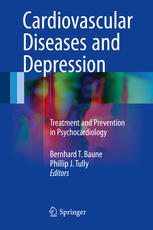

Most ebook files are in PDF format, so you can easily read them using various software such as Foxit Reader or directly on the Google Chrome browser.
Some ebook files are released by publishers in other formats such as .awz, .mobi, .epub, .fb2, etc. You may need to install specific software to read these formats on mobile/PC, such as Calibre.
Please read the tutorial at this link: https://ebookbell.com/faq
We offer FREE conversion to the popular formats you request; however, this may take some time. Therefore, right after payment, please email us, and we will try to provide the service as quickly as possible.
For some exceptional file formats or broken links (if any), please refrain from opening any disputes. Instead, email us first, and we will try to assist within a maximum of 6 hours.
EbookBell Team

4.7
96 reviewsThe world is witnessing a burgeoning global epidemic of chronic cerebro- and cardiovascular disease and depression disorders. The reader will find this comprehensive book to be a long-needed, up-to-date knowledge base on these increasingly recognized comorbid conditions that have long-term consequences for individual function and well-being and society in general. This comprehensive book outlines the complex and bidirectional relationship between various types of depression and cerebro- and cardiovascular diseases. It is written by a range of experts in the field, including psychiatrists, cardiologists, neuroscientists, psychologists, and epidemiologists, with the aim of presenting and discussing the most recent evidence on the pathophysiology, neurobiology, and clinical presentation of these common and disabling comorbid conditions and the available pharmacological, psychological, and behavioral interventions. By elucidating the underlying clinical and neurobiological mechanisms in the brain and the rich interplay between the body and the brain biology, the book brings together the latest knowledge of this overlapping area in Psychiatry and Cardiology. The clear descriptions of evidence-based approaches to clinical treatment ensure that it will serve as both an up-to-date overview and a future guide for practicing clinicians and graduate students.